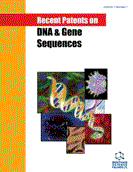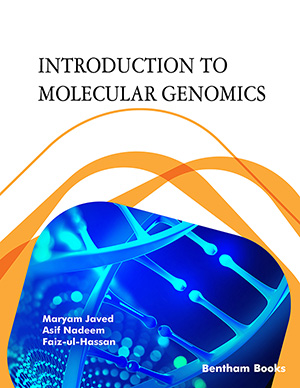Abstract
The mammalian target of rapamycin (mTOR) plays an important role in cell growth. Dysfunction of mTOR has been linked to many human diseases, such as cancers, obesity, diabetes, cardiovascular diseases and neurological disorders. Currently, the mTOR inhibitor rapamycin and its analogs have been vigorously evaluated and developed as anticancer drugs. Here, we will review the most recent patents and patent applications relating to mTOR pathway. Moreover, we will discuss the patents and patent applications on the treatment of mTOR-associated metabolic diseases and cancers.
Keywords: mTOR, mTORC1, mTORC2, rapamycin, Akt/PKB, S6K, 4EBP1, TSC1/TSC2, Rheb, cancer
Recent Patents on DNA & Gene Sequences
Title: Recent Patents and Patent Applications Relating to mTOR Pathway
Volume: 3 Issue: 1
Author(s): Xiangyu Liu and Zhenyu Yue
Affiliation:
Keywords: mTOR, mTORC1, mTORC2, rapamycin, Akt/PKB, S6K, 4EBP1, TSC1/TSC2, Rheb, cancer
Abstract: The mammalian target of rapamycin (mTOR) plays an important role in cell growth. Dysfunction of mTOR has been linked to many human diseases, such as cancers, obesity, diabetes, cardiovascular diseases and neurological disorders. Currently, the mTOR inhibitor rapamycin and its analogs have been vigorously evaluated and developed as anticancer drugs. Here, we will review the most recent patents and patent applications relating to mTOR pathway. Moreover, we will discuss the patents and patent applications on the treatment of mTOR-associated metabolic diseases and cancers.
Export Options
About this article
Cite this article as:
Liu Xiangyu and Yue Zhenyu, Recent Patents and Patent Applications Relating to mTOR Pathway, Recent Patents on DNA & Gene Sequences 2009; 3 (1) . https://dx.doi.org/10.2174/187221509787236192
| DOI https://dx.doi.org/10.2174/187221509787236192 |
Print ISSN 1872-2156 |
| Publisher Name Bentham Science Publisher |
Online ISSN 2212-3431 |
 43
43Related Articles
-
Protein Targeting Constructs in Alpha Therapy
Current Radiopharmaceuticals DAB389EGF Fusion Protein Therapy of Refractory Glioblastoma Multiforme
Current Pharmaceutical Biotechnology CXCR4 and CXCL12 Expression in Rectal Tumors of Stage IV Patients Before and After Local Radiotherapy and Systemic Neoadjuvant Treatment
Current Pharmaceutical Design Polyunsaturated Fatty Acids and their Metabolites in Neural Development and Implications for Psychiatric Disorders
Current Psychopharmacology DNMT Inhibitors in Cancer, Current Treatments and Future Promising Approach: Inhibition of Specific DNMT-Including Complexes
Epigenetic Diagnosis & Therapy (Discontinued) Chitinases: Biomarkers for Human Diseases
Protein & Peptide Letters Thrombospondins as Anti-Angiogenic Therapeutic Agents
Current Pharmaceutical Design Vascular Endothelial Growth Factor: A New Paradigm for Targeting Various Diseases
Current Angiogenesis (Discontinued) Salmonella as Live Trojan Horse for Vaccine Development and Cancer Gene Therapy
Current Gene Therapy Nanoparticles: A Neurotoxicological Perspective
CNS & Neurological Disorders - Drug Targets Glioblastoma: Prognostic Factors and Predictive Response to Radio and Chemotherapy
Current Medicinal Chemistry The Tumor Stroma as Mediator of Drug Resistance - A Potential Target to Improve Cancer Therapy?
Current Pharmaceutical Biotechnology System Models, Assays and Endpoint Parameters to Evaluate Anticancer Compounds During Preclinical Screening
Current Medicinal Chemistry Targeting Oncogenes and Tumor Suppressors genes to Mitigate Chemoresistance
Current Cancer Drug Targets Editorial [Hot Topic: Target Therapy in Brain Tumours and Metastases (Guest Editors: M. Caraglia and R. Addeo)]
Current Cancer Drug Targets Possibility of Non-Immunosuppressive Immunophilin Ligands as Potential Therapeutic Agents for Parkinsons Disease
Current Pharmaceutical Design Tumoricidal and Anti-Angiogenic Actions of Gamma-Linolenic Acid and Its Derivatives
Current Pharmaceutical Biotechnology Development of Focal Adhesion Kinase Inhibitors in Cancer Therapy
Anti-Cancer Agents in Medicinal Chemistry Resveratrol Protects β Amyloid-Induced Oxidative Damage and Memory Associated Proteins in H19-7 Hippocampal Neuronal Cells
Current Alzheimer Research Novel Gastrin Receptor-Directed Contrast Agents - Potential in Brain Tumor Magnetic Resonance Imaging
Medicinal Chemistry












